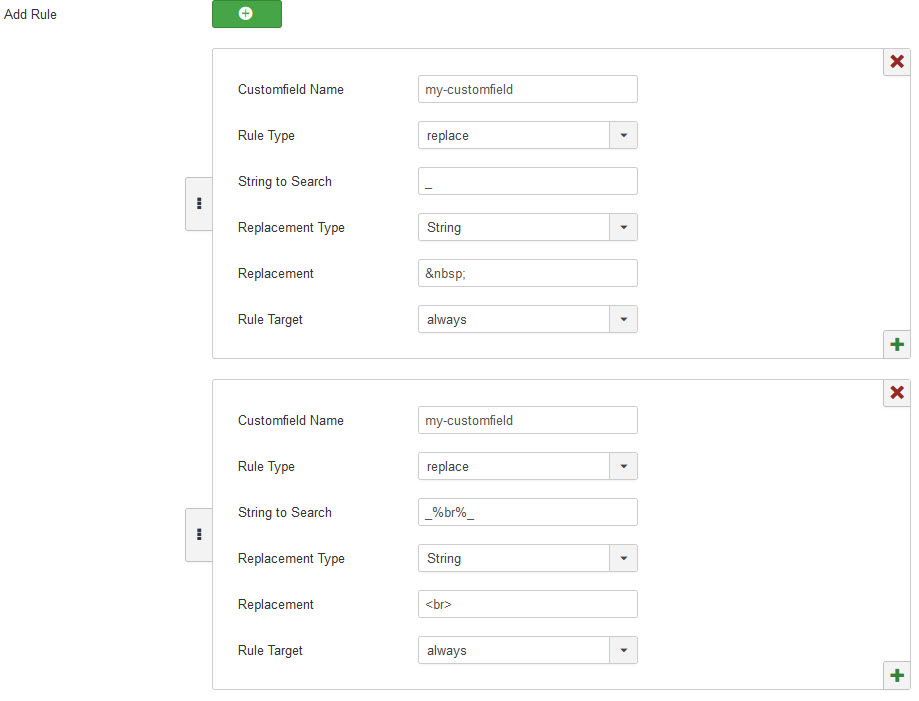Tab Custom Rules
| Field | Description |
| Field Contents to be skipped | If one of the values of this comma separated list is found in a custom field, the field is not displayed. This prevents empty fields or fields with a NULL value from being displayed in the frontend. |
| Skip empty Fields | General function that prevents empty fields from being displayed in the frontend. Fields without values are not displayed in the frontend if this option is activated. |
| Add Rule | A new rule can be added using the Plus button. There is no limit in the number of rules. Rules are applied one after the other. Available rules are:
|
| Add Rule > Customfield Name | Name of the custom field to which this rule applies |
| Add Rule > Rule Type | The applicable rule. Available rules are:
|
| String to Add | Only available when Rule Type Before or After is selected The string to be added Example: Customfield Value = 21 Rule Type = before String to Add = # Frontend Display: #21 |
| String to Search | Only available when Rule Type Replace is selected The string to be replaced can be one or more words. |
| Replacement Type | Only available when Rule Type Replace is selected Type of replacement, this replaces the string to search, can be a string or a linebreak. |
| Replacement | Only available when Rule Type Replace is selected und Replacement Type is String The string to be inserted |
| Rule Target | This option controls for which layout this rule should be applied. |
Some examples of rule usage
Customfield Name: my-customfield
Customfield Value: This_is_my_Field_Value
Replace
Underscores should be replaced by line breaks
Underscores should be replaced by Linebreaks so in the Frontend the Field will be rendered like this:
This<br>is<br>my<br>Field<br>Value
This
is
my
Field
Value
Before / After
Information should be output before or after the field value
Mode: before
String: #
Result: #This_is_my_Field_Value
Mode: after
String: lets move on
Result: This_is_my_Field_Value lets move on
Multiple Rules
Replace all Underscores with Whitespaces and insert a line break for each _%br%_
Fieldvalue for this example: This_is_my_Field_Value_%br%_lets_move_on_%br%_and_go
Keep in mind: The custom rules are processed one after the other, so if we first replace all underscores with spaces we won't have the expected information for the linebreak - an example of how it wouldn't work:

This example above shows a rule sequence that does not lead to the desired result.
As a result all underscores are replaced by spaces in the first pass, which means that after the first pass the string of the custom field looks like this:This is my Field Value %br% lets move on %br% and go
As you can see our second rule would not work anymore because there is no element with the string _%br%_ in the string. The solution is that we must first use the rule with the line break and only then we can substitute the underscores with spaces.